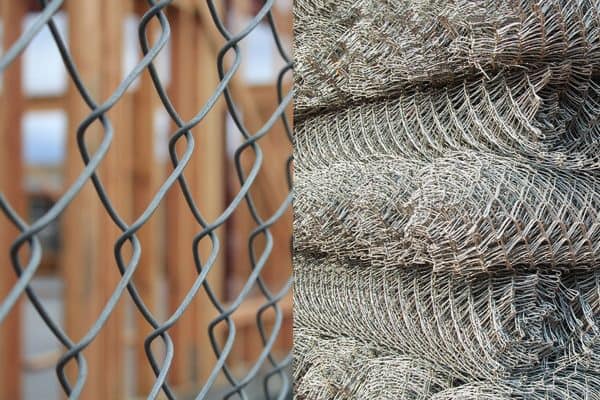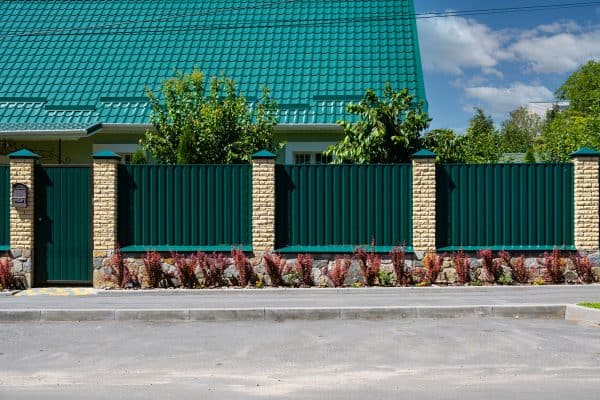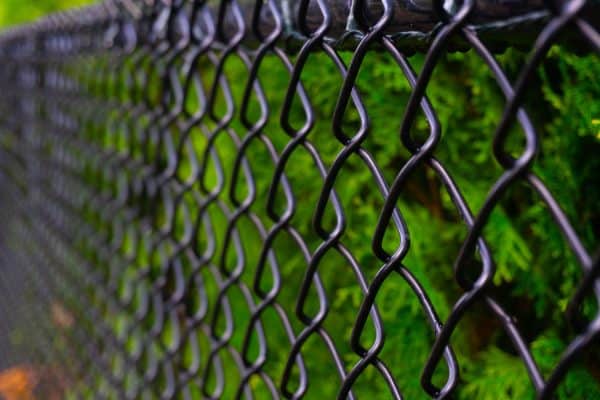It's useful to know how long a fence normally lasts when choosing one for your home or business. So when you're planning to put up a chain-link fence, you may wonder, how long does it last? Here is what we discovered after gathering relevant information for you.
Chain-link fences are strong and long-lasting. On average, chain-link fences last for up to 20 years. But you can prolong its lifespan by applying a coating.
But what are chain link fences? What are the different materials used? What factors should you consider when opting to use them? Read on to know about these. Also, let's delve into the pros and cons of using chain-link fences, how to install them, and how to maintain them.
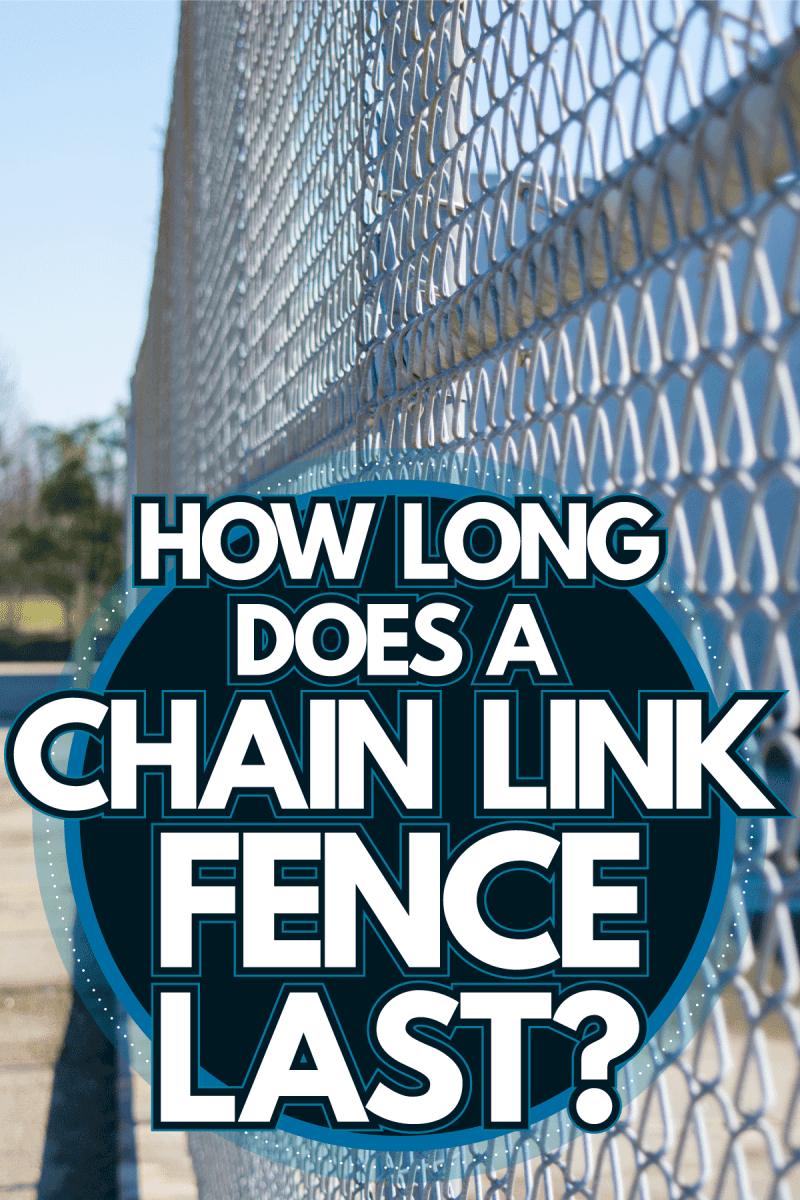
What Are Chain Link Fences?
This type of fence also referred to as hurricane fence, cyclone fence, or mesh fence, is a woven form of fencing made from coated, intertwining steel wires.
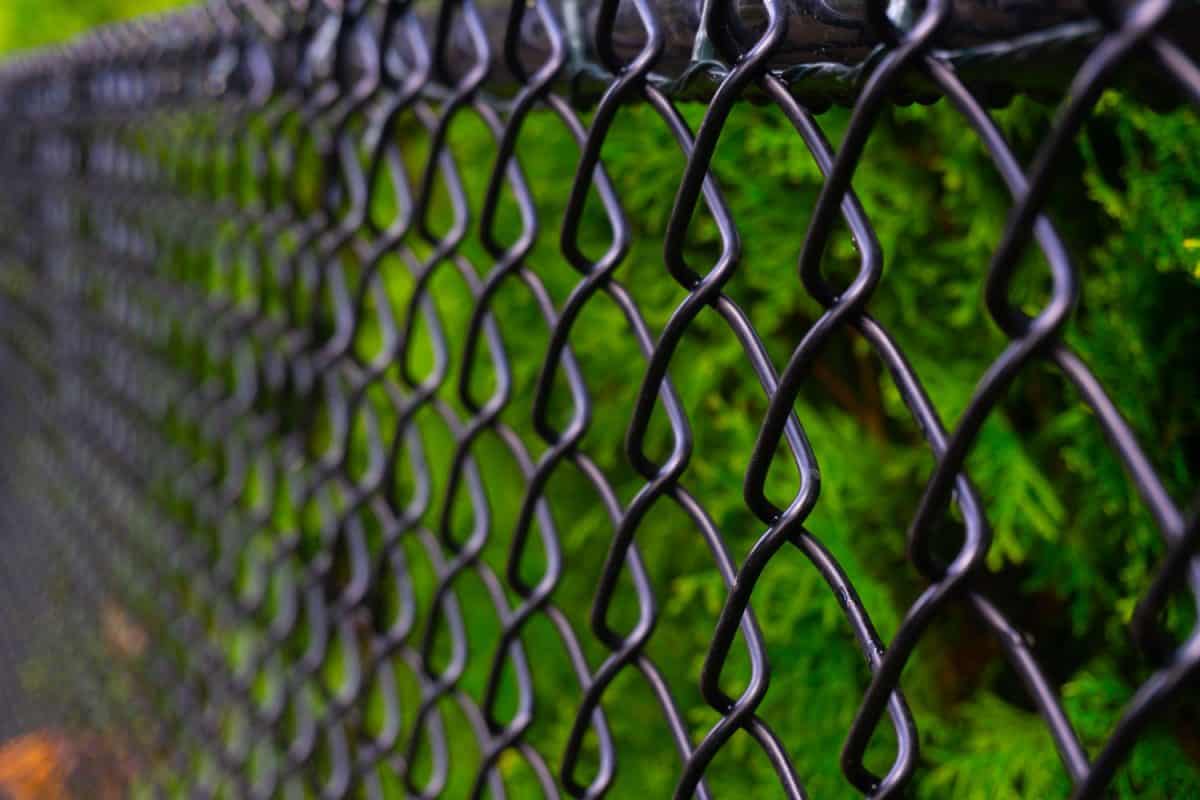
Vertically bending the wires in a zig-zag creates a diamond pattern. These are then attached to poles that are buried in the earth for long-term stability.
What Are The Pros And Cons Of Having A Chain Link Fence?
This fencing type has several benefits and disadvantages for both households and businesses.
Pros
This type of fencing may be the best option for enclosing a backyard, a business structure, or an industrial area. Here are some advantages when you use one:
- It uses one of the least expensive fencing materials.
- It can be customized with a variety of heights, gauges, and color coatings.
- When installed correctly, it requires little maintenance.
- It allows complete visibility which enables you to see people approaching and also allows sunlight to enter your property.
- It is much easier and quicker to install than other forms of fencing.
- The material is significantly less susceptible to weather-related wear and tear because the wind travels through the openings.
- If a portion gets damaged, you can simply cut it out to repair.
- The sturdy material serves as a security barrier, keeping unwanted visitors off your property.
Cons
On the other side, here are the disadvantages of installing chain link fences:
- This type of fence is prone to rust and discoloration.
- It is not aesthetically pleasing and are not flexible when it comes to its design.
- Although you can benefit from its see-through feature, it compromises your privacy and safety.
- It is prone to sagging.
- The chain effect can detract from the curb appeal of your home.
What Factors To Consider for Chain Link Fences?
Here are the factors to consider if you choose a chain-link fence:
- Material Coating
- Mesh Diameter
- Fence Gauge
- Fence Height
- Color and Design
Material Coating
The chain-link is protected and enhanced by the coating. The most prevalent protective coating is zinc. Zinc prevents rust by forming a white oxidation coating on the surface.
Although aluminum coating can cause rust, it is also used to coat chain-link fences. Color can also be incorporated into the coating.
Mesh Diameter
This fencing type comes in a range of mesh sizes, with diamonds ranging from 1/8 inch to 3-1/2 inch – or even larger in some circumstances.
The most typically used wire mesh size is 2 inches. Lower gauge construction-grade fencing typically has larger mesh square sizes.
Fence Gauge
A gauge measures the wire thickness of a chain-link fence. A greater wire thickness is directly proportionate to the strength and stability of a chain-link fence.
Chain link fence gauge numbers indicate the size difference. The lower the gauge number, the thicker the material.
For commercial premises, the most typical chain-link fence gauges are:
- 6 (0.192 inches);
- 9 (0.148 inches);
- 11 (0.120 inches); and
- 11.5 (0.113 inches).
It is critical to choose a fence gauge that is appropriate for your chain-link fence.
Fence Height
Common chain-link fence height can be as short as 3 feet and as high as 12 feet. Although it can cater to any height that you want.
Color and Design
You can choose from a variety of colors. But the most popular choices are tan, white, black, green, and brown. Other manufacturers also let you customize the color to suit your needs.
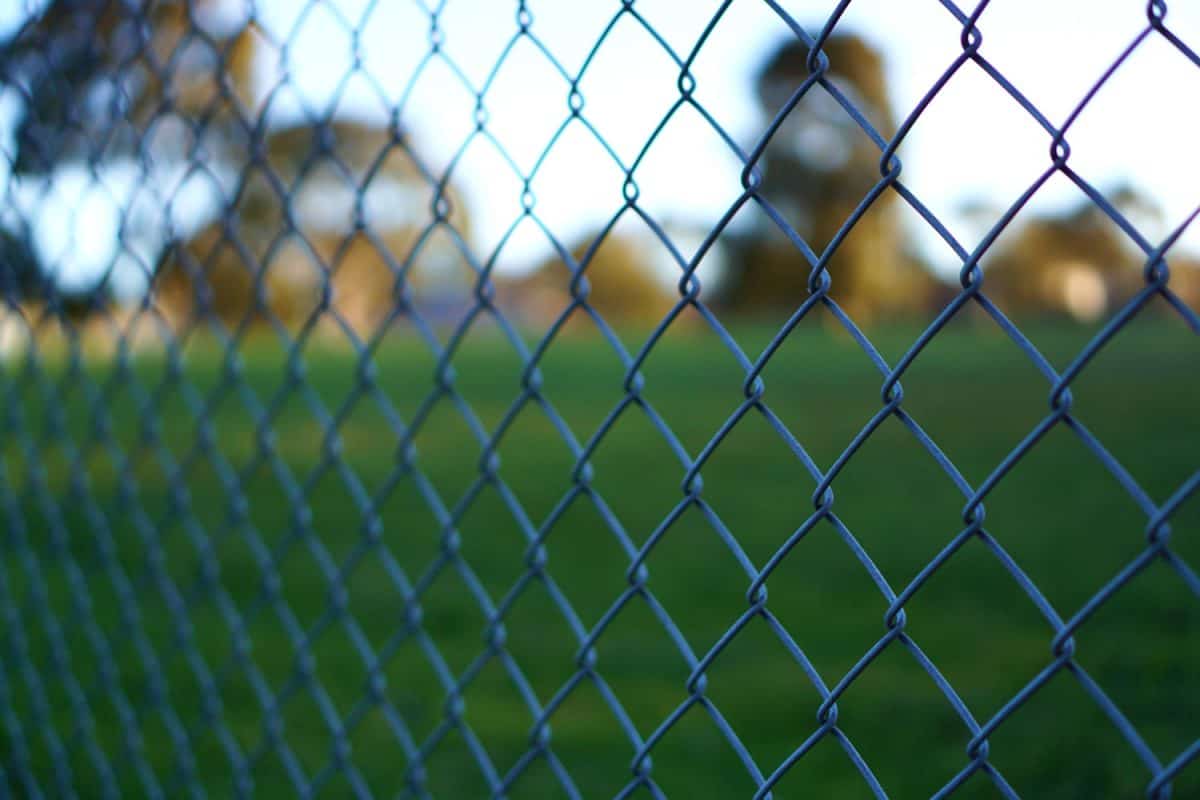
What Are The Different Chain Link Fences Materials?
Here are some commonly used chain-link fence styles available:
- Galvanized
- Aluminum
- Stainless Steel
Galvanized Chain Link Fences

This is the most widely used type of chain-link fence. Galvanized type of steel is ideal for commercial use since it does not rust and retains its appearance for several years without being worn down by the elements.
Galvanization is the process of treating the metal with a corrosion-resistant coating. Zinc is commonly used as a coating. Dipping the metal in molten zinc is one method of galvanization.
Aluminum Chain Link Fences
This type of chain-link fence is lightweight, weatherproof, corrosion-resistant, durable, and has high tensile strength. They have the same galvanized wire coating as the galvanized wire.
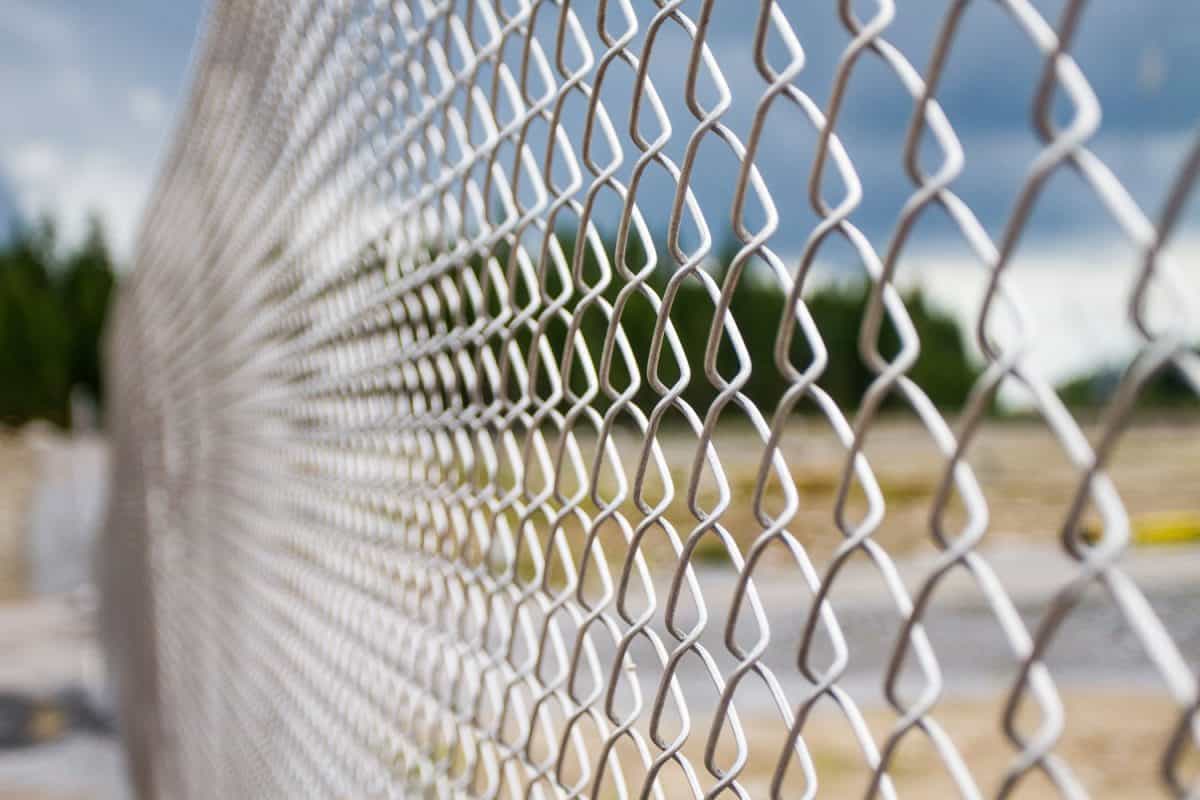
This style of chain-link fence is found in commercial and public settings, such as schools and ranches. Even in adverse weather conditions, they can live up to 25 years.
Stainless Steel Chain Link Fences
These chain-link fences are resistant to alkalis, can tolerate high temperatures, and can withstand harsh weather. They can keep their shape for a long time because they are not prone to sagging, rolling, or breaking. This type of chain-link fence is utilized in high-security areas like highways, airports, and train tracks.
However, they are more expensive because they are more durable than other chain-link fencing materials.
How Does Coating Protect Your Chain Link Fence?
Coatings are used to protect parts against oxidation by preventing them from coming into contact with oxygen and water.
Zinc coatings safeguard ferrous metals by oxidizing zinc before it rusts. Instead of the protected ferrous metal component, the zinc covering will corrode.
How To Install A Chain Link Fence
To install this type of fence, you must do these steps:
- Prepare to install the fence.
- Mark and install terminal posts.
- Mark and install line posts.
- Cover up the posts with bands and caps.
- Put the top rail in place.
- Attach the fence mesh.
- Expand the chain link.
What Do You Need To Prepare Before Installing The Fence?
Before you start with the actual installation of your fence, you must first prepare and secure the necessary documents and permits. Also, check any neighborhood regulations for fencing restrictions.
In addition, establish the limit of your property line. Another important thing to remember is to locate and mark your utility lines so it will not cause any hassle when you start digging holes.
How To Install The Posts
Generally, your post holes should be 4 inches from your borderline. This way, the concrete footings will not encroach on your neighbor's land. Then, measure your total fence perimeter to determine the length of chain-link fence you need.
To install the terminal and line posts, you need to:
- Mark the location of each post with stakes or spray paint.
- Excavate all post holes first.
- Add 4 inches of gravel to the hole and compact them.
- Place a terminal post in the hole's center.
- To make your fence look straight, plumb the post.
- Fix the post into place.
- Pour concrete around the post. Repeat until you fix all posts.
To differentiate, corner posts and gate posts are examples of terminal posts. They are usually higher and more substantial than line posts. The vertical support structures for the chain-link fence are called line posts, and they are normally set 10 feet or fewer apart.
You can read this article if you want to learn more about fence post spacing: "What Is The Maximum Distance Between Fence Posts?"
How To Take Care Of A Chain Link Fence?
Here are some tips you can follow to maintain your chain-link fence:
- Apply a rust-resistant coating to your chain-link fence periodically, especially near the bottom where moisture from grass and dirt collects.
- Remove dirt and debris from your fence by spraying it with water.
- Do not let vegetation grow in your fence.
- Immediately repair damaged parts of your fence.
- Climbing on the fence should be avoided.
In Conclusion

Comparatively, when properly installed and maintained, chain-link fences last longer than wood fences. This fence type is affordable and comes in different colors to suit the style you want.
Before you leave, if you want to know how much it costs to build a chain-link fence for a half-acre property, check out this post: "How Much Does It Cost To Chain Link Fence Half An Acre?"

